Common Pitfalls To Avoid When Building A Life Sciences Lab
By Chris Ertl
Designing labs can be complicated. To stay competitive, it is crucial that companies adapt to market changes. New products and services may mean changes in operations. For companies that have lab spaces, this can be costly. Many companies make decisions based on saving money without planning ahead.
This usually means generating additional costs and unknowingly creating safety issues. Here are the top seven design pitfalls to avoid when building a lab, or as I like to refer to them, the seven deadly sins of designing a lab.
1. Designing without flexibility in mind
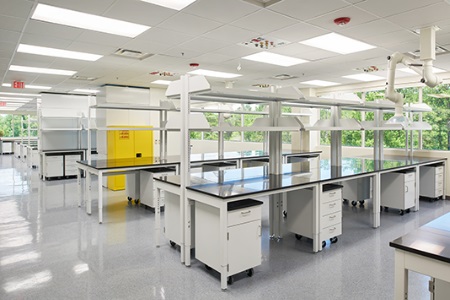 What companies are doing in their labs today may not be what they are doing tomorrow. This is especially true because of the continuing advancement and the addition of new instruments, equipment and robotics in lab environments.
What companies are doing in their labs today may not be what they are doing tomorrow. This is especially true because of the continuing advancement and the addition of new instruments, equipment and robotics in lab environments.
Many companies don’t properly plan for flexibility and adaptability in their lab designs. They purchase traditional fixed casework and pay the price as things change. The result in this thinking is that they become stuck with a design that is no longer functional for their work or have to spend additional capital on a redesign.
Forward-thinking companies design labs with modular workstations and mobile casework, and multiple configurations are part of the initial design process for implementation as things change in the future. This lab design trend of built-in flexibility saves owners time and money in the long term.
2. Failure to plan for sustainability
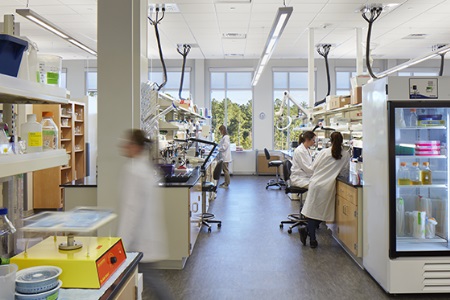 According to the National Institute of Building Sciences, in an article on sustainable laboratory design, “A typical laboratory currently uses five times as much energy and water per square foot as a typical office building.”[1]
According to the National Institute of Building Sciences, in an article on sustainable laboratory design, “A typical laboratory currently uses five times as much energy and water per square foot as a typical office building.”[1]
When companies forget to account for large numbers of containment and exhaust devices, heat-generating equipment, 24-hour access for scientists and the need for fail-safe redundant backup systems and uninterruptible power supply or emergency power, this can be a problem waiting to happen.
Smart companies focus on energy-efficient technologies, including air quality monitoring systems, water conservation and recycling, heating technology and low-energy exhaust systems. These sustainable lab considerations not only result in lower environmental impacts but also reduce operating costs and increase worker productivity–a win-win-win.
3. Forgetting to plan ahead for technology
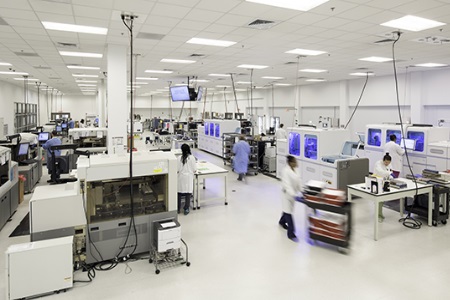 Many companies don’t tell lab consultants important pieces of information about their equipment and technology plans. They are so busy doing other things that they often fail to see the value in disclosing information about big pieces of equipment that need to be accounted for, how many people will be working in their lab or about data and electrical needs.
Many companies don’t tell lab consultants important pieces of information about their equipment and technology plans. They are so busy doing other things that they often fail to see the value in disclosing information about big pieces of equipment that need to be accounted for, how many people will be working in their lab or about data and electrical needs.
Planning for this upfront is crucial because oversight can be very costly. If contractors are brought in to make changes after the lab is built, companies will pay extra for their time. Having a design now, with plans for growth that include the use of the lab furniture slated for installation, will save companies big headaches and expenses later.
4. Neglecting to incorporate ergonomics
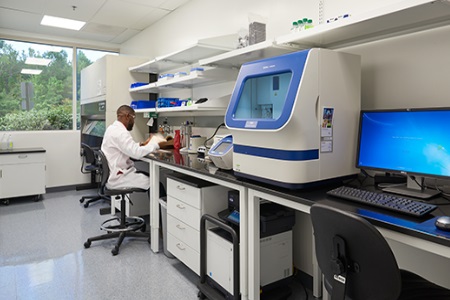 Technology has changed how people work in labs, so employees spend a lot more time sitting. Recent research has shown that too much sitting can lead to major health risks.
Technology has changed how people work in labs, so employees spend a lot more time sitting. Recent research has shown that too much sitting can lead to major health risks.
Unfortunately, many companies still aren’t taking ergonomics seriously. They think that if they buy an adjustable lab stool, they have done their part. But it is more than this. When it comes to ergonomics in the lab, it is better to plan ahead than to pay a big price later.
Incorporating ergonomics means looking at the overall picture of how employees do work, the quality of seating, the height of work surfaces, location of tools and the movements that go into the workday.
Right about now, you may be saying yourself, “I am just designing a lab. It’s not like my employees will be working in a warehouse or factory lifting heavy boxes and equipment.” That may be true, but lab owners should ask themselves these questions about their lab employees:
- Will they sit a lot?
- Will they work on computers?
- Will they use microscopes that have a neutral head position?
- Will they have to reach more than 18 inches for anything?
- Will they have to lift heavy boxes of supplies, such as bottles of chemicals?
These are just some of the conditions that indicate a need to include ergonomics in laboratory design.
Keeping in mind that any reputable lab consultant will offer design solutions that include ergonomic considerations, such as height-adjustable lab benches, fume hoods, stools, etc., there should be no reason not to consider this upfront. By thinking about workplace health and safety in lab design, companies can potentially save thousands—if not hundreds of thousands—in the long run. Employee performance, well-being and the bottom line could depend on it.
5. Buying cheap lab furniture
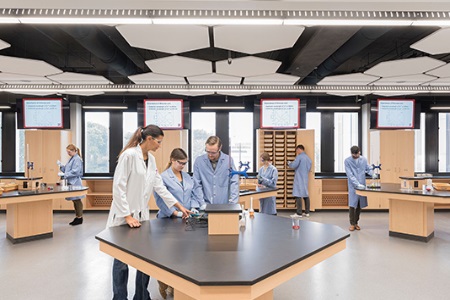 With flexible casework systems all the rage, many off-brand companies are popping up to provide low-cost casework solutions. This can be attractive to companies looking to reduce impact to their bottom line. Many companies think that they can save money by buying cheap products, such as lab benches, lab tables, laminar-flow workstations, fume hoods and seating, but don’t consider the risks involved.
With flexible casework systems all the rage, many off-brand companies are popping up to provide low-cost casework solutions. This can be attractive to companies looking to reduce impact to their bottom line. Many companies think that they can save money by buying cheap products, such as lab benches, lab tables, laminar-flow workstations, fume hoods and seating, but don’t consider the risks involved.
Cheap furniture may end up costing companies more in the long run. Often, these products have limited or no warranties, come with quality and safety issues and it can be difficult to find replacement parts. It is not uncommon for additional money to be spent after these purchases are made because of repairs that are needed, replacement for failure or having to renovate the lab because something doesn’t work correctly.
Using manufacturers whose products have been UL Listed, certified and/or meet American National Standards Institute and Business and Institutional Furniture Manufacturer's Association standards is always the best choice.
6. Purchasing the most economical benchtops
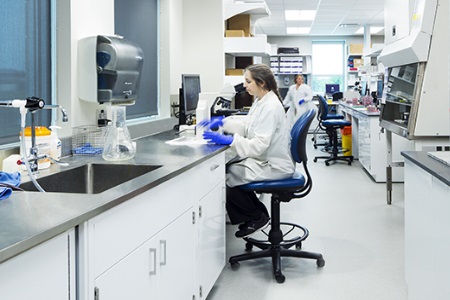 Companies that look to save money on their benchtops could be headed for problems and end up spending more money than planned.
Companies that look to save money on their benchtops could be headed for problems and end up spending more money than planned.
There are several factors to consider when selecting the right benchtop materials for a labs, such as bacterial resistance, chemical resistance, corrosive resistance, fungal resistance, moisture resistance, scratch resistance heat exposure and many more.
If this is addressed upfront, laboratory work surfaces should last 20 years or more. Hiring lab planning experts can assist companies in providing comparisons of the materials to consider for work surfaces. Each of the surfaces below have their own options and characteristics that could have major consequences if improperly specified:
- Phenolic resin—solid, lightweight, durable, high chemical resistance but not flame retardant
- Epoxy resin—durable, nonporous, wet and corrosive environments but are heavy
- Stainless steel—nonporous, high bacteria/fungal resistance but dents, scratches and has high price
- Chemical resistant laminate—high chemical resistance, midprice but light duty and prone to repair
- High-pressure laminate— Designer look, light duty, most economical but low chemical/bacterial resistance
Lab benchtops should be a long-term investment. It is important to consider the type of work performed in the lab and anticipate the lab’s future functions. Budget is always important, but benchtop choice must be able to stand the test of time and the rigors of work.
7. Not engaging the design team early enough
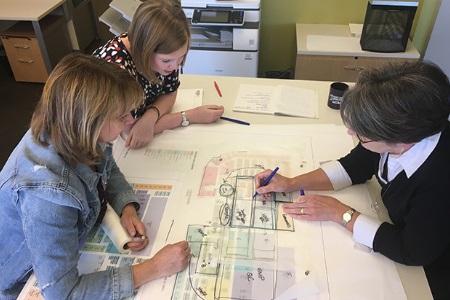 The biggest mistake companies make is the failure to engage the design team early enough in the project. Many clients and owners mistakenly believe that they can save on design costs by establishing the design program on their own.
The biggest mistake companies make is the failure to engage the design team early enough in the project. Many clients and owners mistakenly believe that they can save on design costs by establishing the design program on their own.
Whether determining space requirements or utility needs, the design team can offer a valuable resource in helping to guide the stakeholders in what their true needs are and right-sizing space and utility requirements. All too often, the design team is given a pre-established program by the facilities directors only to spend time re-evaluating and validating the requirements once the design team is brought on board.
Bringing the design team in to the early visioning and programming sessions can ultimately save valuable schedule time by streamlining these activities into one effort. In addition, ensuring that systems and spaces are right-sized at the beginning of the project can offer significant cost savings and reduce the need for significant value-engineering efforts later in the project.
Moving forward with design
There is a lot to consider when designing a laboratory. An experienced lab consultant can share knowledge and expertise from working with a variety of clients. Bringing a consultant on early in a project and letting subject matter experts share their knowledge can help companies design labs that that serve companies today and long into the future.
Reference
1. https://www.wbdg.org/resources/sustainable-laboratory-design
